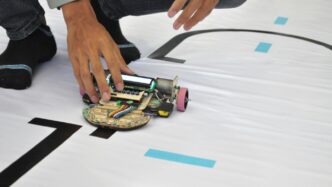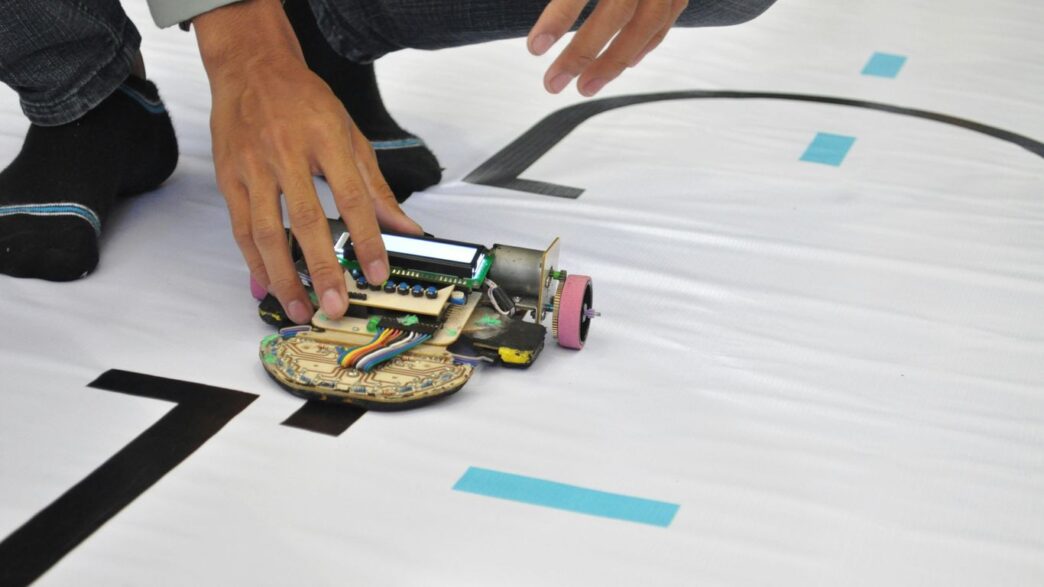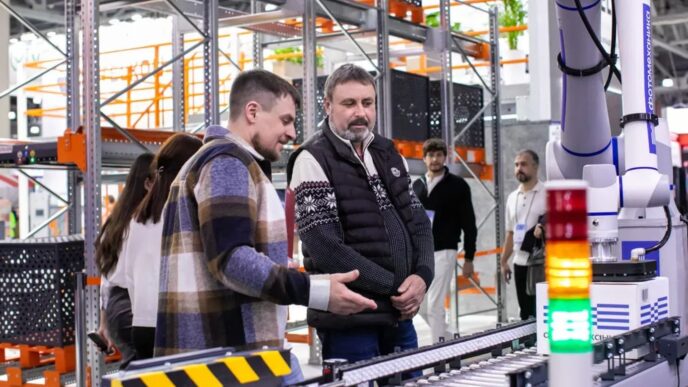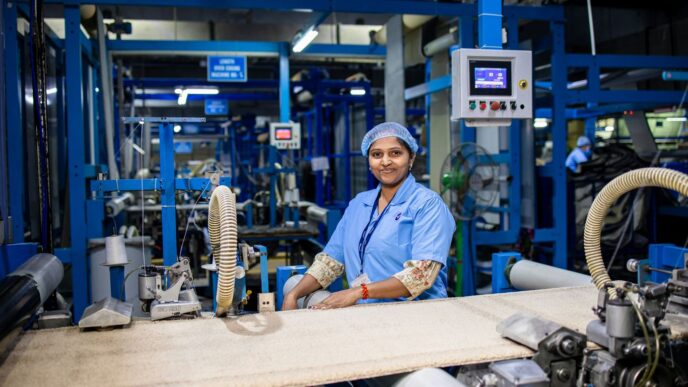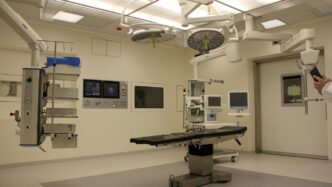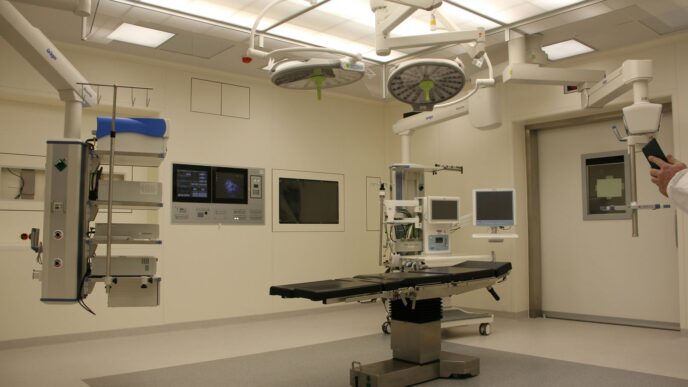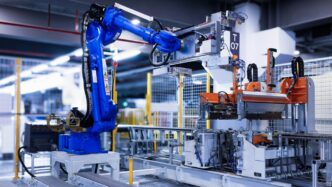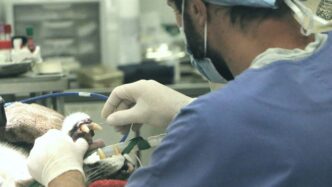Understanding What Is Robotics
So, what exactly is robotics? At its core, it’s the field of engineering and science that deals with designing, building, operating, and applying robots. Think of it as the intersection of mechanics, electronics, and computer science, all working together to create machines that can do things. These aren’t just clunky metal boxes from old sci-fi movies anymore; robots have become incredibly sophisticated and are popping up in more places than you might think.
The Evolution of Robots From Concept to Reality
The idea of artificial beings doing work for us isn’t new. Ancient myths and early mechanical toys hinted at this desire. But the real journey from concept to reality started gaining steam in the 20th century. Early robots were often simple, programmed machines designed for repetitive tasks, like those you’d find on an assembly line. They were revolutionary for their time, automating jobs that were tedious or dangerous for humans. Over the decades, with advances in computing power and materials, robots got smarter, more agile, and capable of much more complex actions. It’s been a steady climb from basic automation to the complex, adaptable machines we see today.
Key Components That Power Robotic Systems
What makes a robot tick? It’s a combination of several key parts working in harmony:
- The Brain (Processors): This is where the robot thinks. It can range from simple circuits to powerful computers that process information, make decisions, and react to what’s happening around them in real-time. They’re not quite like human brains, but they’re getting there in terms of processing power.
- The Muscles (Motors): Robots need to move, and motors are what make that happen. You’ve got different types: DC motors for general movement, servo motors for precise turning, and stepper motors for very exact positioning. Choosing the right motor is key for what the robot needs to do.
- The Senses (Sensors): How does a robot know what’s around it? Through sensors. These are like its eyes, ears, and touch. They can detect obstacles (bump sensors), measure distances (ultrasonic sensors), sense light, or even feel temperature. This allows robots to interact with their environment in a more aware way.
- The Body (Structure): This is the physical form of the robot. It’s built from various materials, from simple plastics to strong metals and composites. The design of the body affects how the robot moves, how strong it is, and how it can interact with the world.
The Role of AI and Machine Learning in Robotics
This is where things get really interesting. Artificial Intelligence (AI) and Machine Learning (ML) are like giving robots the ability to learn and adapt. Instead of just following pre-programmed instructions, robots with AI can learn from their experiences, recognize patterns, and make better decisions over time. Machine learning allows them to improve their performance without being explicitly reprogrammed for every single scenario. This is what’s enabling robots to handle more complex tasks, understand their surroundings more deeply, and even interact with humans in more natural ways. It’s a huge leap from the robots of the past that could only do one thing, over and over again.
Robots in Our Daily Lives
It’s pretty wild how robots are showing up everywhere these days, not just in sci-fi movies or big factories. They’re actually becoming part of our everyday routines, making things a bit easier, or at least more interesting. It feels like we’re living in the future, and honestly, it’s still a little surprising sometimes.
Robots as Personal Assistants and Household Helpers
Remember when smart speakers first came out? Now, they’re practically in every home, acting like little digital butlers. You can ask them to play music, set timers, or tell you the weather, all with your voice. And then there are the cleaning robots, like those little disc-shaped vacuums that zip around your floors. They might not be perfect, but they sure do cut down on the chores. It’s like having a tiny, dedicated helper that just keeps going, even when you’re busy.
- Voice Assistants: Devices like Google Home and Amazon Echo can manage your schedule, answer questions, and control other smart devices in your home.
- Automated Cleaning: Robot vacuums and mops can clean floors autonomously, navigating around furniture and returning to their charging stations.
- Smart Home Integration: Robots are increasingly connected to home systems, allowing for automated lighting, temperature control, and security.
Robotic Companionship and Entertainment
This is a bit of a newer area, but it’s growing. Think about those little robot pets that can interact with you, respond to touch, and even show different "moods." They’re not quite the same as a real pet, of course, but for some people, they offer a kind of companionship without the mess or the vet bills. In entertainment, we’re seeing more advanced animatronics in theme parks that look and move incredibly realistically, making the whole experience more immersive. It’s like stepping into a story.
The Impact of Delivery Robots
Getting your food or packages is changing too. You might have seen those small, self-driving robots zipping along sidewalks in some cities. Companies are testing these out for deliveries, aiming to make the process faster and maybe even cheaper. It’s still early days, and you’ll still see plenty of human delivery drivers, but it’s a sign of things to come. Imagine getting your pizza delivered by a little robot – it’s a bit strange, but also kind of cool.
| Service Type | Current Method | Robotic Alternative |
|---|---|---|
| Food Delivery | Human couriers | Sidewalk robots, small autonomous vehicles |
| Package Delivery | Postal services, couriers | Drones, sidewalk robots |
| Grocery Shopping | In-store, human shoppers | Automated fulfillment centers, delivery robots |
Transformative Applications of Robotics
Robots are no longer just science fiction; they’re actively changing how we work, heal, and even grow our food. It’s pretty amazing to see how far this technology has come, moving beyond the factory floor into some pretty critical areas of our lives.
Advancements in Healthcare Robotics
In the medical world, robots are making a huge difference. Think about surgeries – robotic systems can help surgeons perform incredibly precise procedures that are less invasive. This often means quicker recovery times for patients. Beyond the operating room, robots are also being used to deliver medications within hospitals, which can speed things up and reduce errors. Some robots are even designed to offer comfort and companionship to patients, especially the elderly or children, which is a really interesting development in patient care.
Automation in Industrial Manufacturing
Factories have been using robots for a while, and it’s only getting more sophisticated. These machines are fantastic at handling repetitive, tough, or even dangerous jobs. They can work around the clock without getting tired, which really boosts how much can be produced. Companies are using robotic arms for assembly lines, making sure things are put together quickly and accurately. This not only increases output but also makes workplaces safer by taking humans out of harm’s way.
Robotics in Agriculture and Food Production
Farming is another area seeing a big shake-up thanks to robots. These agricultural robots can automate tasks like planting seeds, watering crops, and even weeding. This means farmers can be more efficient, use resources like water more wisely, and potentially get better crop yields. It’s a way to make food production more sustainable and less reliant on manual labor, which is a big deal for feeding a growing population.
Robots in Extreme and Specialized Environments

So, we’ve talked about robots helping out at home and in factories, but what about places where humans just can’t, or really shouldn’t, go? That’s where robots really shine. They’re built tough to handle conditions that would be pretty rough on us.
Robotics in Space Exploration
Space is the ultimate extreme environment, right? It’s cold, there’s no air, and there’s all sorts of radiation. Sending robots up there is way easier and safer than sending people. Think about NASA’s Mars rovers, like Perseverance. These things are basically rolling labs, trundling across the Martian surface, taking pictures, analyzing rocks, and looking for any signs that life might have existed there. They have to be super robust to handle the dust, the temperature swings, and just the general harshness of another planet. It’s how we learn so much about other worlds and get ready for when humans might eventually make the trip.
The Role of Robots in Hazardous Environments
Beyond space, there are plenty of dangerous spots right here on Earth. Robots are sent into situations where there’s a risk of explosion, toxic chemicals, or radiation. For instance, bomb disposal units use robots to get up close and personal with suspicious packages, keeping the human operators a safe distance away. In nuclear power plants, especially after accidents, robots are used to inspect damage and clean up radioactive materials. They can work in places that would make a person very sick or worse. Even in manufacturing, robots handle tasks that involve dangerous machinery or heavy lifting, reducing the chances of workplace injuries.
Robots Enhancing Entertainment Experiences
This might seem a bit less extreme, but robots are also making entertainment more engaging. Theme parks have been using animatronic robots for years to create lifelike characters that move and interact with guests. These aren’t just simple puppets; they have complex mechanics that make them seem almost real. Then there are the more interactive robots, like some of the advanced robotic pets that can learn tricks or respond to commands. They offer a kind of companionship and fun that’s different from traditional toys or pets, adding a new layer to how we play and relax.
The Future of Robotics and Ethical Considerations
So, where are we headed with all this robot stuff? It’s pretty wild to think about how far we’ve come, from clunky factory arms to machines that can explore Mars. But as robots get smarter and more common, we’ve got some big questions to figure out.
Humanoid Robots and Their Potential
Imagine robots that look and act more like us. These humanoid robots are getting pretty advanced. Companies are working on making them better at everyday tasks, like helping out around the house or even assisting people who need care. They could learn from us, get better at what they do, and maybe even become companions. The idea is that they’ll make our lives easier and more convenient. But, of course, there’s a flip side. What happens when these robots become too good at certain jobs? That’s where things get complicated.
Ethical Discussions Surrounding Robot Adoption
This is where things get really interesting, and maybe a little scary. As robots take on more roles, we need to think about the rules. For example, if a self-driving car has to make a split-second decision, who’s responsible for the outcome? Or what about robots used in warfare? We’re talking about machines making life-or-death choices. It’s not just about the big stuff, either. Think about robots in our homes collecting data. How do we make sure our privacy is protected? We need clear guidelines so these amazing tools don’t end up causing harm or being used in ways we didn’t intend.
Navigating Job Displacement and Privacy Concerns
This is probably the most talked-about issue: jobs. As robots get better at doing tasks, especially repetitive ones, many jobs could change or disappear. Think about manufacturing, delivery, or even customer service. It’s not all doom and gloom, though. New jobs will likely pop up in areas like robot maintenance, programming, and design. The big challenge is helping people adapt. We’ll need programs to teach new skills so folks can transition into these new roles. On the privacy front, it’s a constant battle. Robots, especially those with AI, can collect a lot of personal information. We need strong security and clear rules about how that data is used. It’s a balancing act between using technology to improve our lives and making sure we don’t lose our privacy or leave a lot of people behind.
The Robot Revolution is Just Getting Started
So, we’ve taken a look at what robots are and how they’re already a big part of our lives, from helping out at home to doing tricky jobs in factories and even exploring other planets. It’s pretty wild to think about how far we’ve come, and honestly, it feels like we’re just scratching the surface. With AI getting smarter all the time, robots are going to do even more amazing things. It’s exciting, sure, but it also means we need to think about how we want this all to work out. We’ve got a lot to figure out, but one thing’s for sure: robots are here to stay and will keep changing things in ways we can only begin to imagine.

